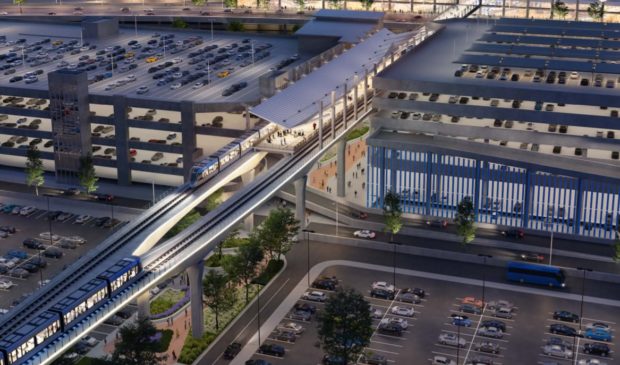Analysis of code changes for Project Connect extended until December
Monday, April 11, 2022 by
Chad Swiatecki City staff will need until December to determine the full scope of processes and city regulations that will have to be changed to accommodate the planning and construction of the components of the Project Connect transit plan. City Council had originally instructed the city manager to have a plan for needed code amendments complete by this month, but the scope of the project and the many departments potentially involved in the review has raised the need for more time.
In a memo released last week, Assistant City Manager Gina Fiandaca said the city code is largely oriented around vertical, site-specific development instead of the horizontal, linear nature of the light rail lines, subway tunneling and other large-footprint pieces of Project Connect. Fiandaca said she anticipates all the required code changes will be accomplished with one comprehensive ordinance for Council consideration, and assured the extension of the current analysis won’t impact the planning and engineering work currently taking place to deliver the many transit improvements by their intended deadlines.
“To deliver the full evaluation of code and ordinance development in response to the city resolution, as well as follow the required code amendment process, a postponement to December 2022 is necessary. This time will also further allow staff to continue work with community stakeholders as we build our recommendations, and the extension to December 2022 will not impact the Project Connect timeline,” the memo reads in part.
The memo details some of the early findings of some pieces of code that will need to change to accommodate the extensive construction projects that will take place throughout the city. Among them, the noise ordinance will need to have its permits extended beyond the maximum 72 hours currently allowed, and the “fast track” process for project permitting to allow more horizontal elements of development will need changing.
Also, the range of activities taking place along public rights of way are expected to require a large number of variances and waivers from current code. The maximum length of temporary use provisions will likely have to be extended to accommodate construction field offices that will need to remain in place longer than the six months currently allowed.
Also related to Project Connect planning, the Austin Housing Finance Corporation and the Housing and Planning Department will announce the opening of the application process today for community-initiated solutions related to the $300 million in anti-displacement funds included in Project Connect. The timeline for that part of the project splits the funding into three $100 million sections over 13 years.
As the memo was made public, another memo from Project Connect staff forecast that the cost of the entire system will grow to more than $10 billion, or 40 percent more than was originally planned when voters approved the project in 2020.
The memo said increasing property values in the booming Austin real estate market and changes to features of the downtown subway tunnel are responsible for much of the cost. The tunnel’s price tag has more than doubled to $4.1 billion due to a combination of flood risks and the difficulties of locating certain stops in the system because of technical factors like Capital View Corridors.
In a joint meeting with City Council and the Austin Transit Partnership in October – the same meeting where Council directed staffers to have their code change analysis complete by this month – Capital Metropolitan Transportation Authority CEO Randy Clarke said the initial engineering on the system’s Orange and Blue lines would allow for a revision in project budgets.
“I think most people are pretty aware Covid has certainly impacted things like construction costs, labor availability, commodity costs and things of that nature while real estate in the city has, it’s fair to say, exploded in cost in the last 18 months,” he said. “We’re factoring all of those things in and we think by next summer that information will be available so we can determine if there could be impacts.”
The Austin Monitor’s work is made possible by donations from the community. Though our reporting covers donors from time to time, we are careful to keep business and editorial efforts separate while maintaining transparency. A complete list of donors is available here, and our code of ethics is explained here.
You're a community leader
And we’re honored you look to us for serious, in-depth news. You know a strong community needs local and dedicated watchdog reporting. We’re here for you and that won’t change. Now will you take the powerful next step and support our nonprofit news organization?









